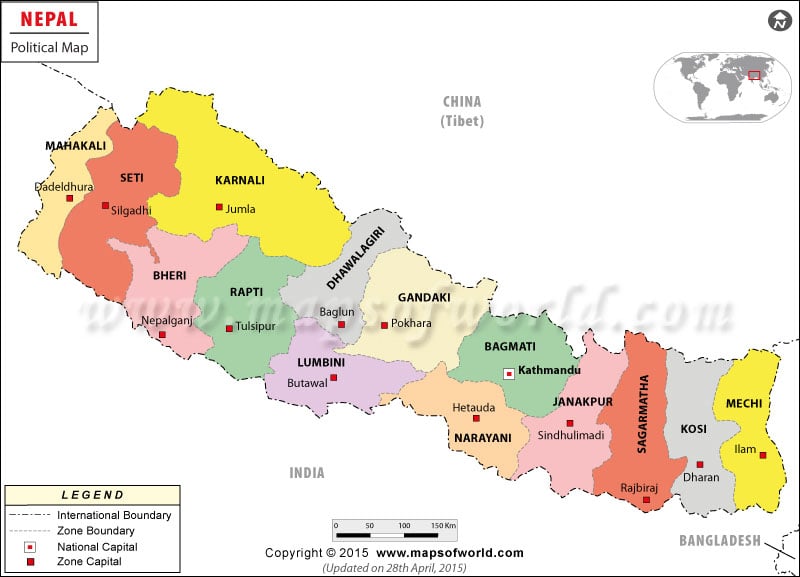ABOUT NEPAL
Friday, July 8, 2011
Sunday, July 3, 2011
Introduction
PHYSICAL

The southern belt is almost plain land and the northern belt is rocky and mountainous where there are thousands of snow peaks. The mahabharat range that lies in between these two belts is the gently slopping land having river valleys and tars. This belts is gently slopping in the eastern parts and more steep in the western part.
The country is mainly drained by the three major river system namely koshi, gandaki and karnali from east to west respectively.
From the economic point of view, the terai is the extensive agricultural belt, the mid land is the fruit and gain crops growing area and the northern part is a very beautiful area suitable for touristic activities and livestock farming as well. In this way, diversity has been reflected in economic, social, cultural and other aspects of life. These make Nepal
POLITICAL
(Administrative division)

Each administrative division has its own headquarters. Dhankuta ,kathamandu ,Pokhara ,Birendranagar and Dipayal are the regional headquaters of the eastern, centeral,western,, Midwestern and farwestern development region respectively. Similarly, zones and districts also have their headquaters.Each VDC has its VDC office.
ECOLOGICAL DIVISION
The mountainous lies in the northernmost part. It covers about 35 percent land area where only about 7 percent cultivated land and about 8 percent population are found. The mountain lies above the altitude of 3000 metre where there is a large number of mangnificent snow-covered mountainous,including the highest peak (Mt.Everest 8848m)of the world . it coveres about 42 percent land area, 44.5 percent population and 37 percent cultivated land. It lies between 600m to 3000m altitude. This region comparise several attractive peaks, fertile valleys and river basins.The terai lies in the southern part of the country. It is elevated up to 600 meters from the sea level. It comparies 23 percent of the total land area, 49 percent population and 56 percent cultivated land . it has been formed out of alluvium brought and deposited by rivers. The land is fertile for agriculture where wide varieties of crops are grown.
PHYSIOGRAPHIC DIVISION
Physiographic refers to the study of surface land form characteristics, physiography of Nepal
Terai lies in the southern part . it is the plain land of altitude below 600 meter. The alluvial deposit forms it. The churiya lies just north of terai, formed with conglomerates. Then the middle mountain extends widely. It lies between 900 to 3000 meter altitudes . it has spurs, hill,river basins and valleys like kathmandu and pokhara . The high mountain also has steep and dissected land forms. The high himal is in the northernmost part where hundreds of snow peaks are found .
ELEVATION ZONES
The elevation of Nepal
Subscribe to:
Posts (Atom)



